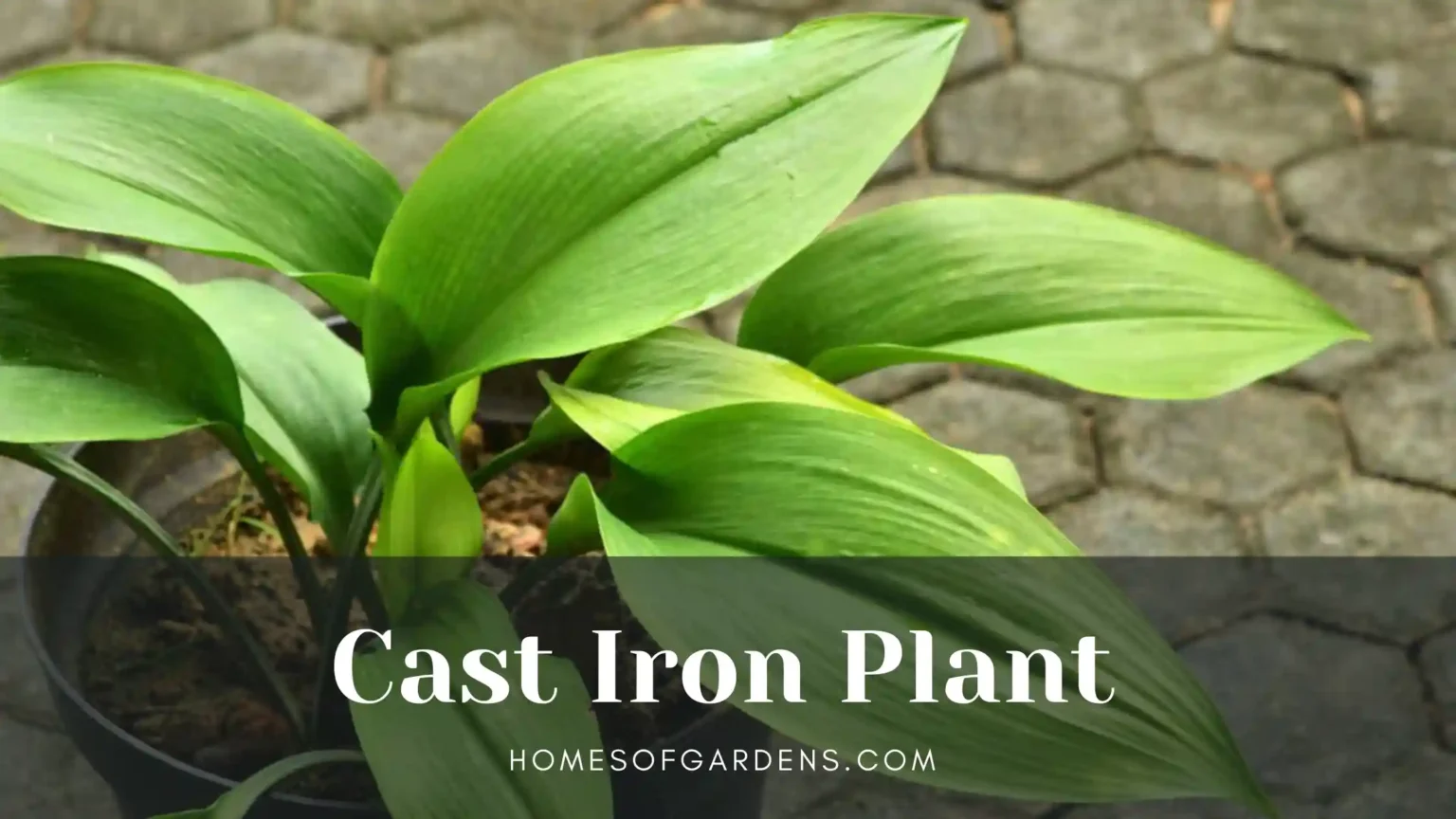Very few plants live up to their names as effectively as those of Cast Iron Plant (Aspidistra elatior). The robust and elegant house plant has earned its place for being among the strongest indoor plants you can plant. With its wide arched leaves, its arching foliage and the capacity to endure environments that can cause other plants weak it’s an easy choice. Victorian gardeners described it as”the “ballroom plant” for its capacity to thrive in dark roomy, stale parlors.
If you’ve ever wanted a plant that combines timeless beauty with near-indestructibility, the Cast Iron Plant is your perfect match. In this article we’ll go over all you should be aware of this robust plant that ranges from the ideal growth conditions to innovative ways to integrate it into your design.
Why the Cast Iron Plant Belongs in Every Home
The popularity of the Cast Iron Plant isn’t only due to its toughness however that’s certainly an important selling point. It adds a calm elegant look to any room with its deep green, lance-shaped leaves which can reach up to 24 inches. Contrary to other houseplants that are more delicate It maintains its beautiful appearance and looks with only a little care.
Here’s what makes it special:
- Thrives in low light – It grows happily in dim corners where other plants struggle
- Survives neglect – Missed waterings? Dry air? It soldiers on
- Grows slowly but steadily – No sudden growth spurts that require constant repotting
- Purifies indoor air – Helps remove common household toxins
- Pet-friendly – Non-toxic to cats and dogs
Originating from the forest floors in Japan and Taiwan The plant has successfully adapted to indoor environments which makes it perfect for modern offices and apartments.
Cast Iron Plant Care
A very attractive feature to this Cast Iron Plant is how it requires very little maintenance. While it’s likely to grow faster in perfect conditions, it’s also remarkably accommodating to less than perfect care.
Finding the Right Light
It’s a good thing that the Cast Iron Plant lives up its reputation even in low-light conditions. Although it performs best in an indirect light medium, it can also thrive in extremely dim areas such as north-facing windows, offices with fluorescent lighting and that dark space of your living room where it’s been the victim of every other plant that you’ve ever tried there.
Avoid direct sunlight, as it can cause scorching to its leaves. If you notice leaves becoming pale or growth slowing down, consider shifting it to a warmer spot (but away from direct sunlight).
Watering Wisdom
This is where the Cast Iron Plant truly earns its name. It prefers to dry out slightly between waterings and can survive occasional droughts.
- Water when the top 2 inches of soil feel dry
- Give it a thorough soak, then let excess water drain
- In winter, reduce watering frequency by half
Signs of overwatering: Yellowing lower leaves
Signs of underwatering: Dry, crispy leaf edges (rare)
Soil and Potting Needs
A well-draining potting mix is ideal. You can use:
- Standard houseplant soil with added perlite
- African violet mix
- Orchid bark blend
Repot only when roots fill the container (typically every 3-4 years). It actually prefers being slightly root-bound.
Temperature and Humidity Preferences
The Cast Iron Plant adapts well to normal household conditions:
- Ideal temperature: 60-75°F (15-24°C)
- Tolerates occasional dips to 50°F (10°C)
- Does fine in average humidity (no misting needed)
Feeding Your Plant
Fertilize sparingly for best results:
- Use diluted balanced fertilizer (half strength)
- Feed monthly during spring and summer
- Skip fertilizing in fall and winter
Troubleshooting Common Issues
Even this tough plant can show signs of stress. Here’s how to address them:
Brown Leaf Tips
- Cause: Usually fluoride in tap water or dry soil
- Fix: Use filtered water or let tap water sit overnight before using
Yellowing Leaves
- Cause: Typically overwatering or poor drainage
- Fix: Check soil moisture and drainage holes
Pale Leaves
- Cause: Too much direct light
- Fix: Move to a shadier location
Slow Growth
- Cause: Normal for this plant, but can indicate need for fertilizer
- Fix: Apply diluted fertilizer in growing season
Creative Ways to Display Your Cast Iron Plant
This plant’s architectural form makes it perfect for:
- Elegant floor plant in a decorative pot
- Office accent that thrives under artificial light
- Bathroom greenery (though it doesn’t need the humidity)
- Mass plantings for a lush, tropical look
- Modern minimalist spaces where its simple beauty shines
Final Thoughts: The Plant That Grows With You
The Cast Iron Plant is more than a sturdy surviving plant. It’s a living testimony to the strength of nature. If you’re a frequent walker or an infrequent waterer or just want a stunning plant that doesn’t require constant attention, this plant is the ideal plant for you.
While caring for the Cast Iron Plant, take time to take note of its quality. While other plants can appear spectacularly and then fade, the steady, consistent cultivator will last for a long time to come. an evergreen presence within your home.
Have you ever cultivated a Cast Iron Plant? Tell us about your experience by leaving a comment below!
